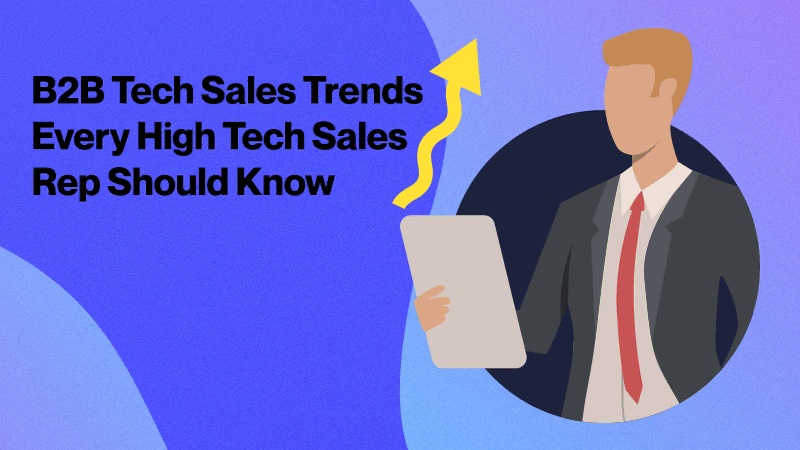Staying on top of the newest B2B sales trends and adopting them into your plan is essential for increasing revenue and staying ahead of the competition. Although it is difficult to forecast what will happen in the B2B sector, it is always reasonable to assume that nothing new will occur.
Several things have changed this year, as you are aware, but one thing has remained constant: sales activity has not slowed down. For sales and marketing to succeed, originality and ingenuity are becoming increasingly vital, as they have been for some time.
A renewed focus on salespeople’s roles as well as the tools and technology that may assist them in doing what they do best. That’s the basis for these tech sales trends for this year.
Personalization and CRM

CRM is becoming increasingly important because it helps bring data from many corporate silos together. It combines data from selling, marketing, customer support, and social media, giving salespeople access to data from a single spot. It has evolved into more than simply a glorified organizer or a spreadsheet substitute in the current area.
Today’s modern client utilizes more than two electronic devices, giving sales and marketing a distinct edge in gaining a better perspective of customer activity and the ability to hyper-personalize.
It’s simpler to follow up on meetings using CRM, there’s less information loss, and targeting clients is a lot easier.
Related: Not Just an Address Book: 4 Hacks to Turn a CRM into a True Sales Tool
Account-based Marketing

Although ABM has been there for a while, it is projected to see substantial growth in the next few years. The reason for this is obvious. At its finest, ABM examines the synchronization of marketing and sales operations. When the pair agree to work together and use a spearhead instead of a net, the fish they capture will almost certainly be larger. Apart from discovering the greatest match accounts, the major success of ABM is having both sales and marketing working together toward a single goal.
With modern ABM, marketing may send targeted communications to targeted accounts that salespeople are working overtime to convert. They’ll all be constantly communicating, which will boost income.
Automation

Because of automation, this tendency has considerably improved. The use of technology, AI, and other new technologies to automate repetitive, time-consuming, and difficult processes helps divert salespeople’s attention toward sales activities, making them more effective and productive.
Non-sales operations like data entry, email contact research, and other administrative duties might be automated to save up critical time for sales personnel, allowing them to focus on sales. At the same time, it’s important to keep in mind that automation must be useful and cannot infiltrate the zone where prospects seek customization. It can’t surprise the prospect by invading their privacy.
Digital Sales Rooms
Transactional sales will become even more automated in the future. Salespeople will devote more time to larger possibilities that need a consultative approach, discovery sessions, and customized bids. More individuals will become involved, both as buyers and sellers.
Customer-facing digital portals and microsites will gain popularity as a result of these broader sales processes. Parties may exchange pertinent materials, interact, and create personalized offers for potential purchasers. By reducing any buyer friction even before the contract is signed, the purpose is to improve the connection. These platforms also allow vendors to measure the material their customers watch and engage with, which is essential for determining which content has the most impact.
Product-led Growth
Operating in the software sector, you’ve undoubtedly heard the term “product-led growth” a few times. Companies, as you may know, can have a variety of sales and growth methods. Some companies rely on sales-driven growth, while others rely on marketing-driven growth. Product-led growth is the newest buzzword.
It’s a sales process in which the product is the primary driver of new company sales, growth sales, and retention. PLG businesses frequently use a freeware or free trial business model to allow potential consumers to test the product before speaking with sales.
The article is originally published on Callbox - The Savvy Marketer



